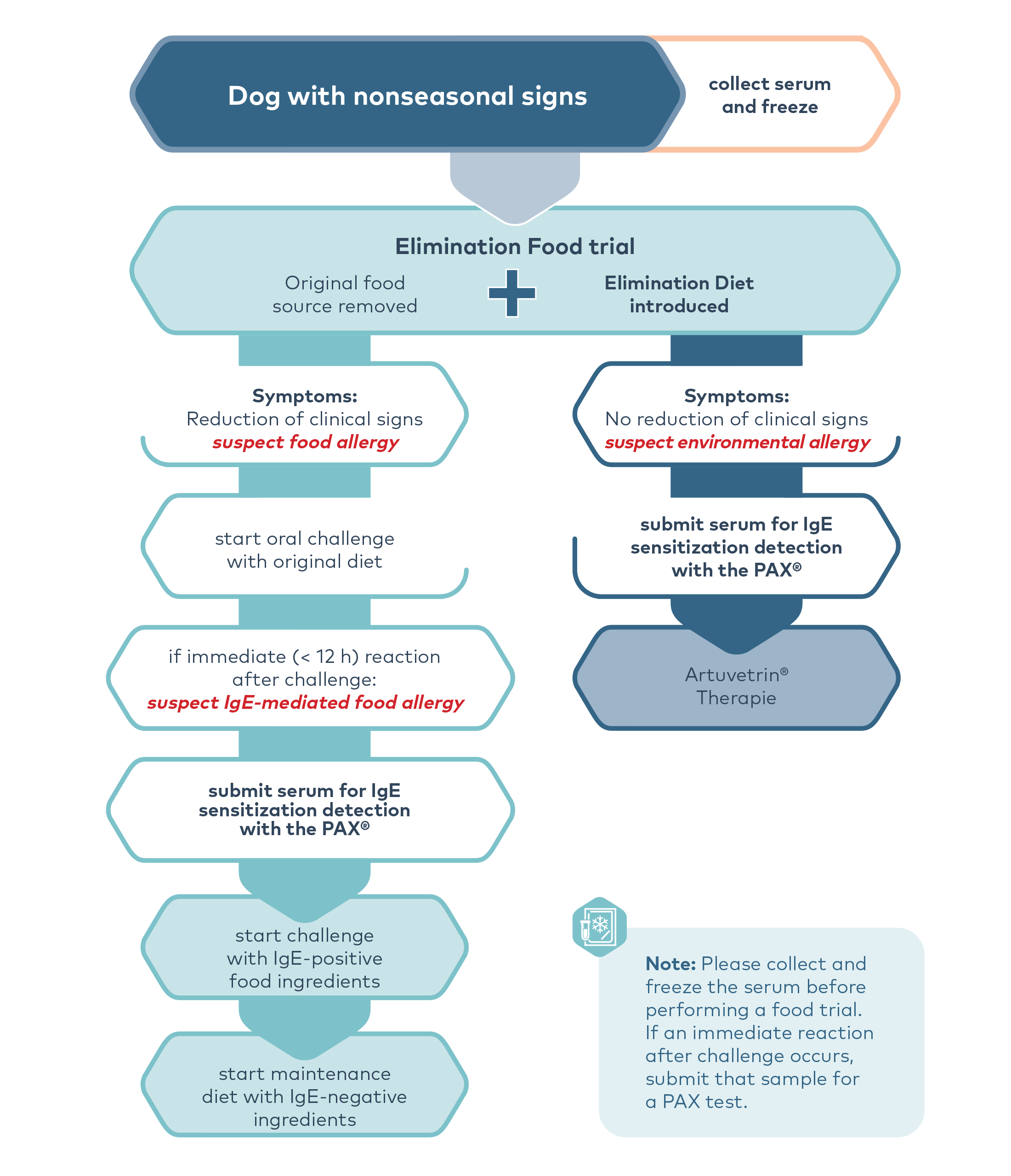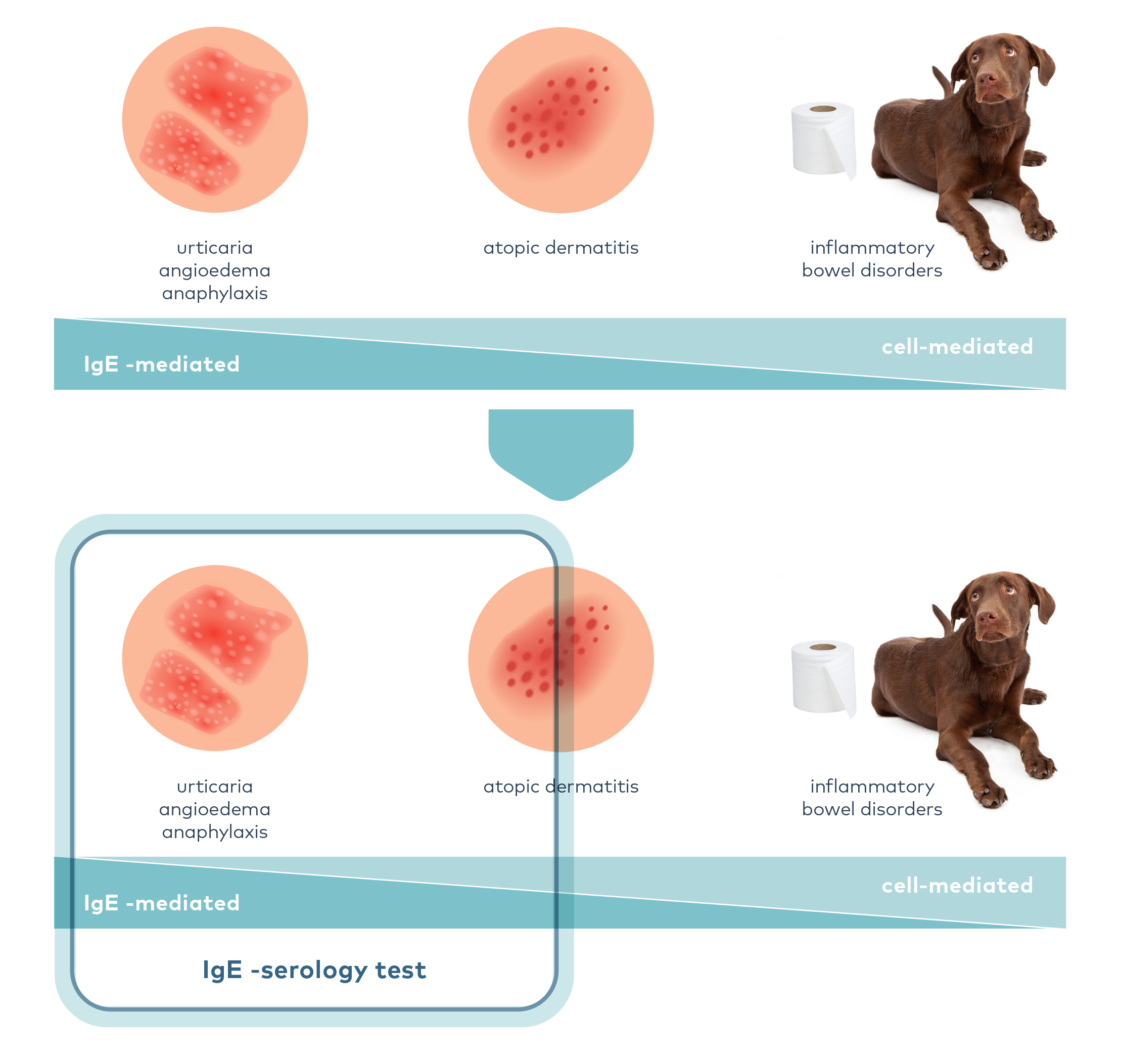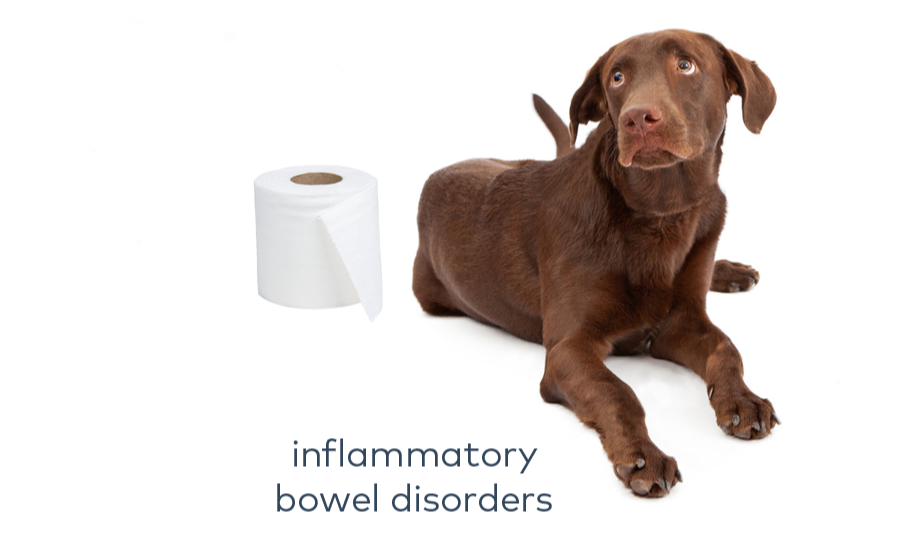At this time, the review of existing evidence suggests that the testing (intradermal, prick, patch or IgE serological) for food allergens does not accurately predict the clinical diagnosis of food allergy in animals except for a non-negligible negative predictive value of some IgE serological tests.
However, “food allergy” only represents an imprecise etiological diagnosis that manifests in a myriad of different clinical diagnoses. While some of these diagnoses are clearly IgE-mediated (e.g., urticaria, angioedema, anaphylaxis), others have a suspected cell-mediated pathogenesis (say, the eosinophilic or lympho-plasmacytic enteropathies). For food-induced atopic dermatitis, there is evidence of both IgE- and/or lymphocyte-mediated mechanisms. As a result of this variety of mechanisms, looking at the usefulness of any single test for the diagnosis of all food allergies is senseless. It would be like looking at the usefulness of urine bacterial culture for the diagnosis of all bacterial infections, when it would only be valid for urinary tract infections!

In the context above, the PAX® only represents a test for the detection of IgE sensitizations to food allergens. These food allergies are those that would manifest as immediate reactions after the ingestion of food ingredients, that is reactions within minutes to hours after an oral food challenge. The diagnosis of food-induced urticaria, atopic dermatitis, etc… should only be made by the clinician after an oral food challenge.
Of importance is that our analysis of more than 1,000 sera from dogs suspected of allergic disease revealed only half of the dogs reacting to an average of only 2.7 food allergens. Notably, most positive reactions were concordant (e.g., dogs reacting to several fish tropomyosins, or egg extracts and associated components, or various soybean components, etc…) suggesting an excellent internal consistency of the PAX®. Additional studies are ongoing to confirm the relevance of the PAX® for the diagnosis of immediate IgE-mediated food allergy subsets in pets.
Then, how can PAX Food be helpful? We propose the following algorithm for using the PAX® Food for the detection of IgE sensitizations to foods:

As conclusion, when to use PAX® food?
- For pets with IgE mediated food allergies (those with immediate reactions after an oral food challenge)
- To help identify patterns of allergen cross-reactivity
- To help prioritize the order of oral food challenges
- To help identify foods unlikely to cause immediate reactions
 Global English
Global English

 Danmark
Danmark
 Deutschland
Deutschland
 UK
UK
 Suomi
Suomi
 Nederland
Nederland
 België (NL)
België (NL)
 Norge
Norge
 Sverige
Sverige



